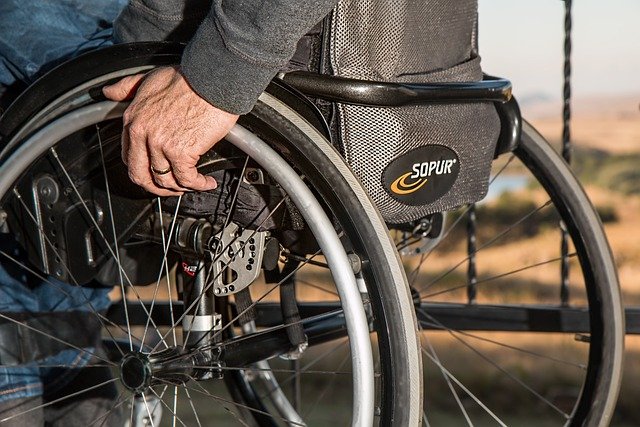Accessible Vans: The Rent-to-Own Program Explained
Rent-to-own programs for accessible vans are financing arrangements sometimes discussed as alternatives to purchasing outright. These vehicles may include ramps, lifts, or adaptive features, with general information focused on payment structures and accessibility options.

How Rent to Own Van Programs Function
Rent-to-own van programs operate through a lease agreement where monthly payments contribute toward the eventual purchase of the vehicle. Participants typically make payments over a predetermined period, often ranging from 12 to 48 months. Unlike traditional vehicle loans, these programs usually require minimal credit checks and may accept applicants with poor or no credit history.
The process begins with selecting an accessible van from the provider’s inventory. Customers sign an agreement outlining payment terms, maintenance responsibilities, and conditions for ownership transfer. Monthly payments are generally higher than traditional lease payments since they include both rental fees and purchase equity. At the program’s completion, participants receive full ownership of the vehicle.
Most programs include maintenance coverage and warranty protection during the rental period. Some providers offer early buyout options, allowing customers to purchase the van before completing all scheduled payments, often at a reduced total cost.
Key Features of Accessible Vehicle Design
Accessible vans incorporate specialized modifications to accommodate wheelchair users and individuals with mobility challenges. Standard features include wheelchair ramps or lifts, lowered floors, and modified seating arrangements. These vehicles maintain original manufacturer safety ratings while adding accessibility equipment.
Ramp systems typically fold out from the vehicle’s rear or side, providing a safe pathway for wheelchair entry. Power lifts offer an alternative for those who prefer vertical access. Interior modifications include tie-down systems to secure wheelchairs during transport and hand controls for drivers with limited leg mobility.
Seating configurations vary based on user needs. Some vans feature removable seats to create additional wheelchair space, while others include rotating captain’s chairs for easier transfers. Storage solutions accommodate mobility equipment like walkers, canes, and medical supplies. Climate control systems ensure comfort for all passengers, regardless of seating position.
Long Term Value in Mobility Planning
Accessible vans represent significant investments in independence and quality of life. Rent-to-own programs allow families to access these vehicles without depleting savings or navigating complex financing procedures. The gradual payment structure helps budget for this major expense while providing immediate transportation benefits.
Vehicle customization adds substantial value beyond basic transportation. Professional modifications typically retain their functionality for many years, and quality accessible vans often maintain higher resale values than standard vehicles. Insurance companies frequently provide coverage for accessibility equipment, protecting the investment.
Long-term ownership eliminates ongoing rental costs and provides stability for medical appointments, employment, and social activities. Many accessible van owners report improved mental health and expanded opportunities once reliable transportation becomes available.
| Provider Name | Program Duration | Monthly Payment Range | Key Features |
|---|---|---|---|
| National Mobility Equipment Dealers Association Members | 12-48 months | $800-$1,500 | Warranty coverage, maintenance included |
| Local Mobility Dealers | 24-36 months | $700-$1,200 | Flexible terms, regional support |
| Independent Van Conversion Companies | 18-42 months | $900-$1,600 | Custom modifications, buyout options |
Prices, rates, or cost estimates mentioned in this article are based on the latest available information but may change over time. Independent research is advised before making financial decisions.
Evaluating Program Providers
Different providers offer varying terms and vehicle selections. Established mobility equipment dealers often provide comprehensive warranties and ongoing support services. Independent conversion companies may offer more flexible terms but varying levels of post-sale support.
Research potential providers by examining their business history, customer reviews, and industry certifications. The National Mobility Equipment Dealers Association maintains standards for member companies and provides consumer resources. Local Better Business Bureau ratings offer additional insights into company reliability.
Vehicle inspection before agreement signing ensures all accessibility features function properly. Documentation should clearly outline maintenance responsibilities, insurance requirements, and conditions that might affect the ownership transfer process.
Making Informed Decisions
Rent-to-own programs suit individuals who need immediate access to accessible transportation but cannot secure traditional financing. These programs work best for people with stable income who can commit to the full payment schedule. Calculating total program costs versus other financing options helps determine the most economical approach.
Consider personal transportation needs, including daily driving requirements and passenger capacity. Some programs allow vehicle exchanges if needs change during the rental period. Understanding modification options ensures the selected van will meet long-term accessibility requirements.
Budget planning should account for insurance, registration, and ongoing maintenance costs after ownership transfer. Many accessible van owners benefit from connecting with local disability communities for recommendations and support regarding vehicle selection and provider experiences.
Accessible van rent-to-own programs provide valuable opportunities for individuals seeking independence through reliable transportation. These arrangements bridge the gap between immediate mobility needs and long-term vehicle ownership goals while offering flexible terms for diverse financial situations.




